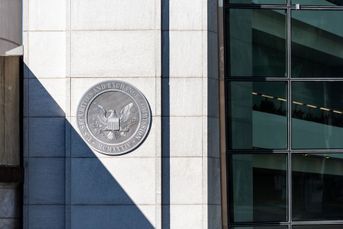Tibble v. Edison 401(k) fee-case decision offers 3 lessons
 Gavel on American flag, close up
Gavel on American flag, close up
The landmark ruling in Tibble v. Edison offers lessons and insights into the duties of 401(k) plan fiduciaries. Read on to find out more
Updated January 9, 2024
In 2017, the landmark 401(k)-fee case Tibble v. Edison was closed after a decade-long litigation.
The first of its kind to reach the Supreme Court, the case was only the second involving alleged excessive 401(k) fees to receive judgment after a trial (the other recorded case was Ronald C. Tussey v. ABB Inc.). Other similar cases were dismissed, settled, or received summary judgment.
Marcia Wagner, principal at The Wagner Law Group commented, “this is one of the few that’s really gone all the way. I think it’s a very significant case. It established something many of us thought and said but wasn’t really written anywhere: there’s an ongoing duty to monitor [plan investments].”
Back in 2015, the Supreme Court established this duty in another decision, then sent the case back to the lower courts for consideration.
InvestmentNews delves into the three significant lessons that can be learned from this historic case.
Case background
Edison International is a large holding company engaged in electric utilities and energy interests. The company and its attached benefits and investment committees offered retail-class mutual funds as part of its 401(k) benefits plan.
There were other materially identical institutional-class funds available at a lower price. These lower-priced mutual funds would have returned a portion of its fees back to the plan’s service providers (including those of Edison). This would have also reduced Edison’s administrative costs.
Despite the advantages of choosing the lower-priced funds, the plan fiduciaries decided to go with the more expensive retail-class funds. This was in 1999.
In 2007, Glenn Tibble and other Edison employees sued the company based on the Employee Retirement Income Security Act (ERISA) of 1974. Tibble and the employees alleged that the fiduciaries of Edison violated provisions of ERISA that require them to prudently administer the plan for the benefit of the plan’s participants. The employees argued that the continuing inclusion of 17 high-priced mutual funds as plan investments constituted an ongoing violation of ERISA.
As a response to the allegations, Edison put up ERISA’s statute of repose as their defense. This statute bars claims filed over six years after the date of the last action that is part of the alleged violation. Edison argued that their claim was well beyond the six-year limit.
The district court gave a summary judgment in favor of Edison, maintaining that there is no “ongoing violation” provision in ERISA. The court went on to state that the act of including an investment is the beginning of the six-year period. Moreover, Edison had not committed any misrepresentations or concealed any violation following the first inclusion of the investments, and the six-year period had already elapsed.
At that time, the U.S. Court of Appeals for the Ninth Circuit affirmed the district court’s decision on the case.
The United States Supreme Court’s Decision
Edison employees alleged that plan fiduciaries violated their duty of prudence by choosing higher-priced mutual funds over lower-cost mutual funds.
Considering the facts of the case, does Edison’s argument that ERISA’s six-year statute of repose prevent their employees’ claim? And take note, the plan fiduciaries first chose the higher-cost mutual funds over six years before the employees filed their claim.
The U.S. Supreme Court unanimously decided “no”. In a rare 9-0 decision, Justice Stephen G. Breyer delivered the Court’s ruling, maintaining that the nature of the fiduciary duty under the trust law constitutes a persistent duty to monitor investments and remove imprudent ones.
Since this continuing obligation is separate from the initial duty to apply due diligence and carefully select investments, a violation of this continuing obligation counts as a breach of fiduciary duty under ERISA.
For as long as the breach of this continuing obligation occurred within six years of filing the suit, ERISA’s statute of repose cannot be invoked, and therefore cannot bar the claim.
Lessons learned from Tibble v. Edison
So, what are the lessons to be learned from this landmark case?
1. Investors should be prudent (and sensible) with share-class selection
After the ruling, Judge Stephen V. Wilson of the U.S. District Court for the Central District of California awarded the plaintiffs a hard-won $7.5 million. This was one of the first ERISA class actions challenging investment fees and revenue sharing. This was also the second case to undergo a lengthy trial and decision process.
Commenting on the ruling, Judge Wilson stated that “a prudent fiduciary would have invested in the lower-cost institutional-class shares” of all 17 mutual funds at issue in the retirement plan of Southern California Edison Co.
The decision emphasizes the need for “careful consideration and, frankly, being proactive in knowledge about what share classes are available,” according to Emily Costin, a partner at Alston & Bird.
In many cases, “institutional share classes may not be available to a plan due to a minimum asset threshold, but fiduciaries will want to monitor what is available when a plan ultimately reaches that threshold,” Ms. Costin added.
“The judge’s opinion shouldn’t indicate institutional shares will always be the right option for a plan,” she concluded. “That will depend on individual facts and circumstances.”
2. Quick action and timing can be crucial
Judge Wilson commented that there can be cases where a fiduciary suspects that an investment is imprudent but would wait for the “regularly scheduled systematic review to confirm (their) suspicion and properly reinvest the funds elsewhere.” But in Tibble v. Edison, this was not one of those cases.
A prudent fiduciary would decide “to switch share classes immediately”, especially if they had the knowledge of the existence of identical investments that had lower costs. Ms. Costin called this the most important takeaway from the decision and advises plan fiduciaries to “consider swift action” regarding a share-class change.
In the case of Tibble v. Edison, Judge Wilson rejected the defendants’ claim that two to five months were necessary for the plan to make a switch. Marcia Wagner of Wagner Law maintains that an immediate share-class change was necessary. With “immediate” meaning “as soon as reasonably practicable,” which could mean as little as two to four weeks.
“There’s no hard-and-bright line, but I can tell you a year is probably too much,” Wagner said. “It has to be moderated by the real world. We don’t live in an instantaneous world.”
3. The fiduciary duty to monitor investments is a continuous obligation
The duty to monitor investments should come as no surprise to fiduciaries. However, as with Tibble v. Edison, there can be cases where the fiduciaries are found lacking in their duties.
This landmark ERISA case serves as a stark reminder that a systematized, continuous investment monitoring process is vital. As with other repetitive tasks, the risk of the investment monitoring becoming a “set it and forget it” process is always present.
Fiduciaries should remain vigilant against having that mindset creep in and ensure their investment monitoring task stays robust and significant. This should be accompanied by a dedication to proper documentation.
Other takeaways from Tibble v. Edison
This groundbreaking case offers other important guidelines for fiduciaries and investors:
An investment policy statement is necessary – even if it’s not required
When it comes to handling IRAs or 401(k)s, plan advisers and consultants often suggest the importance of, and the need for, an investment policy statement. In reality, the law does not require them. So, in effect, many plan advisers or sponsors – even at the behest of the legal department – choose not to install one.
ERISA, despite its usefulness in Tibble v. Edison, does not explicitly state that companies should have a written Investment Policy Statement (IPS) nor does it legally bind companies to draft one. Rather, ERISA merely anticipates and assumes that plan fiduciaries will act as if there was one.
The U.S. Department of Labor auditors usually request a copy of a company’s IPS, but they do not require it. They also do not penalize companies that don’t have it.
It would be a wise move for companies to take the initiative and draft their own Investment Policy Statement that plan fiduciaries can use and refer to, thereby avoiding disasters like the Tibble case.
Fiduciaries have a duty to the plan participants
The plan participants built their case on the allegation that Edison fiduciaries committed an ERISA breach. They allege that this was done by investing in the more costly retail-class mutual funds even if cheaper options were available.
Investing in more expensive mutual funds, then insisting on carrying on with them was a clear violation of the fiduciary responsibilities as set forth by the U.S. Department of Labor. That section states:
“The primary responsibility of fiduciaries is to run the plan solely in the interest of participants and beneficiaries and for the exclusive purpose of providing benefits and paying plan expenses. Fiduciaries must act prudently and must diversify the plan’s investments in order to minimize the risk of large losses.”
In the case of Tibble v. Edison, the fiduciaries were clearly in violation of their responsibilities as set by the U.S. Department of Labor in at least two counts:
1. By investing and carrying on with more expensive mutual funds – a move that was not done in consultation with the plan beneficiaries – their actions ran counter to “run the plan solely in the interest of participants and beneficiaries”.
2. Their actions of insisting on their investment in more costly mutual funds, despite the availability of less costly but similar mutual funds can be considered a violation of the rule that “fiduciaries must act prudently and must diversify the plan’s investments”.
Other laws can be cited in this case. In the Uniform Prudent Investor Act of 1994 (UPIA), the fiduciaries of Edison can be found lacking in the exercise of their fiduciary duties.
Here are sections of the UPIA that can be cited as violating through their negligence:
UPIA SECTION 2. Standard of Care; Portfolio Strategy; Risk and Return Objectives
(a) “A trustee shall invest and manage trust assets as a prudent investor would, by considering the purposes, terms, distribution requirements, and other circumstances of the trust. In satisfying this standard, the trustee shall exercise reasonable care, skill, and caution.”
(7)(d) “A trustee shall make a reasonable effort to verify facts relevant to the investment and management of trust assets.”
Ironically, Edison had an IPS. The terms in Edison’s IPS were too laser-focused on the investment and asset allocation components of the fund inclusions, and not on their costs.
Considering the facts of the case, the plan participants appeared to be much more concerned about the costs. And, in their view, the fiduciaries seemed to work against their interests. This is what likely spelled disaster for the company.
This decade-long Tibble v. Edison case could likely have been avoided if there was better communication between the plan participants and plan fiduciaries. Also, plan fiduciaries should know that managing a 401(k) plan is not to be taken lightly.
This video details the weight of the responsibility a fiduciary has, especially if they are entrusted with something of great value to their beneficiaries. There are also consequences if a fiduciary violates the trust given to them, as you’ll see in the video:
When managing a 401(k) plan, due diligence and accountability are mandatory – after all, the 401(k) plan is what most employees will depend on when they retire.
For case studies like Tibble v. Edison and other news stories, read and bookmark our Industry News page.
Learn more about reprints and licensing for this article.








